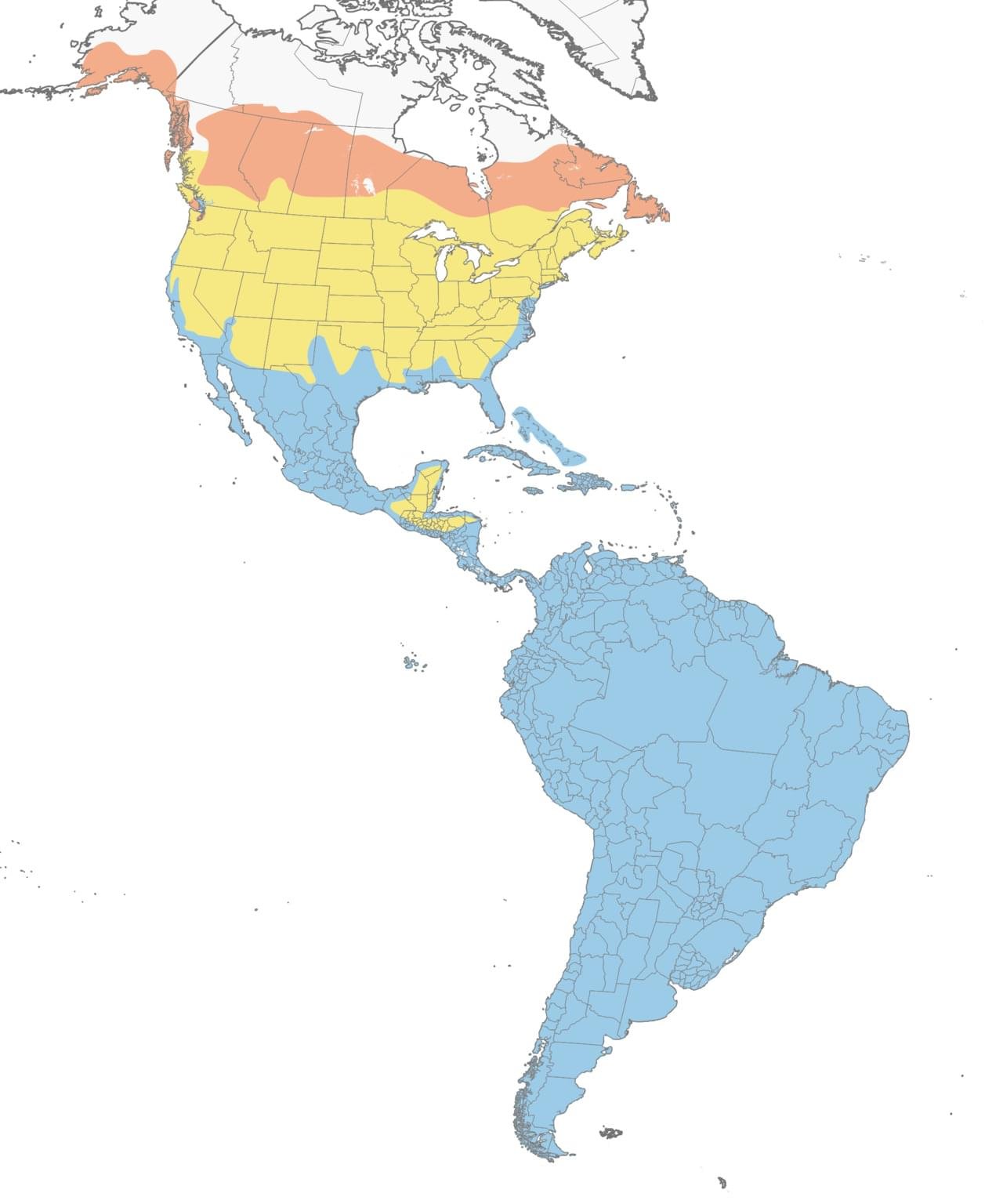With spring well underway, our old feathered friends are beginning to return to us at Goose Pond Sanctuary, some only for a short while. Two species of shorebirds, Killdeer and Spotted Sandpipers, nest at the sanctuary. For most shorebirds, Goose Pond is merely a stopover on their long journeys from South America to their arctic breeding grounds.
Two common visiting shorebirds can leave even the most experienced birders stumped: the Greater and Lesser Yellowlegs. These birds have more in common than the color of their legs: both species have white underbellies, brownish-gray speckled barring on their wings and back, faint gray streaks on their heads, and dark bills.
Can you guess which yellowlegs this is? Answer at the bottom* (photo by Brendan Klick, Macauley Library).
How do you tell these yellow-legged shorebirds apart? Greater Yellowlegs are slightly larger than Lesser Yellowlegs, and have a thicker bill. However, size is not the best indicator when both species aren’t directly compared. Other keys to separate these species are that Greater Yellowlegs have darker barring on their flanks and a long, skinny neck that is clearly distinguished from its head, while Lesser Yellowlegs’ heads blur slightly into their neck.
Their calls can also help with identification. The Lesser Yellowlegs’ most common call is a whistled single or double noted, “tu” or “tu-tu” while the Greater Yellowlegs’ typical call is a clear, ringing “tew tew tew,” given in sequences of three or more (sometimes described as if the bird is saying its name: “yel-low-legs”).
Both species winter in Mexico and South America, migrate through the central United States, and breed in northern Canada and the arctic. The Lesser Yellowlegs’ range is one of the largest of all birds in the Americas, covering 9,000 miles from the tip of South America to the Arctic Ocean. They also breed slightly further north than Greater Yellowlegs. Just think of the diverse habitats these birds fly over and stop at on their migrations.
Lesser Yellowlegs range map (left) and Greater Yellowlegs range map (right) (The Cornell Lab).
Map key: Orange signifies breeding range, yellow is migration, and blue is non-breeding range.
Yellowlegs begin to leave their breeding grounds in late June, with females leaving before males. Many visitors to Goose Pond may be surprised to see yellowlegs heading south in July.
Yellowlegs sightings reported at Goose Pond in 2021.
Yellowlegs sightings reported at Goose Pond in 2022.
Although often solitary and territorial on their nesting grounds, Greater and Lesser Yellowlegs can be seen in fairly large flocks, even with other species of shorebirds, during migration. For example, the high counts for both species at Goose Pond occurred during their fall migration: 37 Greater Yellowlegs on October 4, 2021 and 75 Lesser Yellowlegs on July 20, 2022. However, Goose Pond is not the only stopover site for yellowlegs in the area. Columbia County high counts are: 75 Greater Yellowlegs on April 27, 2021 (near Wangness and Allen Roads) and 300 Lesser Yellowlegs May 6, 2010 (at the Harvey Road ponds)!
Thanks to everyone that submitted eBird data and thanks to Cornell Laboratory for Ornithology that provided information on these interesting shorebirds. To learn more about the Lesser Yellowlegs’ life cycle, you can read John Janovy’s book Yellowlegs (learn more here).
Written by Emma Raasch, Goose Pond Sanctuary ecological restoration technician with Mark Martin and Susan Foote-Martin, Goose Pond Sanctuary resident managers
*Did you guess Lesser Yellowlegs for the photo above? You’re right! And as if this wasn’t already hard enough, Solitary Sandpipers like the one below can look similar to both Yellowlegs too!
Solitary Sandpiper by Arlene Koziol.










